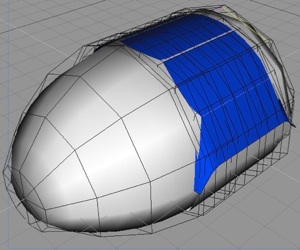Back to. . .

Mass Transit... One person at a time!
The Problem: In its current form, mass transit in America (no pun intended), is both inefficient and unsustainable without subsidy (And we really can’t afford to subsidize anything these days.)
APOLOGISTS for mass transit (MT) will flaunt their checklist of advantage sound-bytes but avoid specifics.
-
• MT Eases Traffic Congestion. While this is theoretically accurate, the statement assumes you will conclude that a full bus or subway, will remove that many automobiles off the road and thereby ease congestion. Even in cities with major mass transit systems, other than the morning and evening rush hours, most of the trains and buses plod along near empty. So while the congestion may be eased for two short periods, most of the 24 hour cycle, it has no effect on traffic congestion.
-
• MT Reduces Pollution Emissions. Using the same assumption, logic suggests that one bus or train will pollute less than a busload of people driving their own cars. Here the falsehood is more blatant. For, while the two rush hours may spew less pollution than the ridership using automobiles, for the rest of the 24 hour cycle, the buses and trains keep droning on through their rounds. Buses pollute significantly more than automobiles. We haven’t researched whether the pollution at the generating station in producing enough electricity to power a subway for 24 hours, but you get the point.
-
• MT Reduces Energy Consumption. The average city bus weighs between 25,000 and 40,000 lbs. Let’s assume each one weighs 30,000. Each city bus can carry between 25 to 60 people. Let’s assume each one can only carry 40- and all of them weigh 150 lbs. That means that every bus is starting and stopping a 40,000 lb. load. The bus is running all day. You get the point. The purported energy consumption reduction is questionabIe, at best.
-
• MT Reduces Traffic Accidents. Can’t fight the logic here. While it may only be true for a few hours each day, those who sit on a bus or train are less likely to be in traffic accidents that those driving. But it’s also true that when a bus collides with a car, the results are more spectacular.
-
• MT Eases Parking Congestion. Since much of the rush hour traffic is directed at the work centers, it is true that mass transit will reduce parking congestion is those sections of a city. It also true that those parked cars in congested parking lots are producing jobs and income at the parking lots. So the benefit of fewer automobiles in parking garages must be offset by the businesses that lose revenues from this convenience.
-
• MT Reduces Infrastructure Costs. This benefit is used, but I question whether it should be allowed on the list. They’re probably referring to road construction and repair which would be reduced by fewer cars. However, more buses that are much heavier will destroy a road much quicker than the average car. And as for trains, the infrastructure to be built prior to even one person enjoying the benefit is an enormous cost.
-
• MT Reduces Consumer Transit Costs. This too, is true if you merely consider the comparable cost of driving your own car to work. But that’s only true during rush hour. All other times, the entire cost of running the bus or train cannot be paid by the few people who ride mass transit. Therefore, the taxpayers foot the bill through taxation.
-
• MT Increases Mobility of Non-Drivers. It’s about time. We finally got to a benefit that is actually true. Yes, for those who don’t drive or can’t afford a car, a mass transit solution makes a person more mobil than a person forced to walk.
In the real world. . .
-
• Except for rush hour, buses and trains traverse their fixed route with minimum ridership
-
• While bus routes can be altered, choosing a rail route requires monumental wagers in time and capital in hopes of realizing adequate ridership.
-
• Proximity to a bus stop or rail station is only available to a small percentage of the population.
So what is the ideal solution?
Demand Response!
A transit system that will carry passengers from door to door at the time they need to travel. Essentially, demand response is a personal taxi that transports a passenger from a pickup point to a destination. But replacing a car with a taxi, is the same as replacing it with a car of a different color with the added expense of a driver.



Copyright © 2010-12 InAmerica, Inc. All rights reserved.













